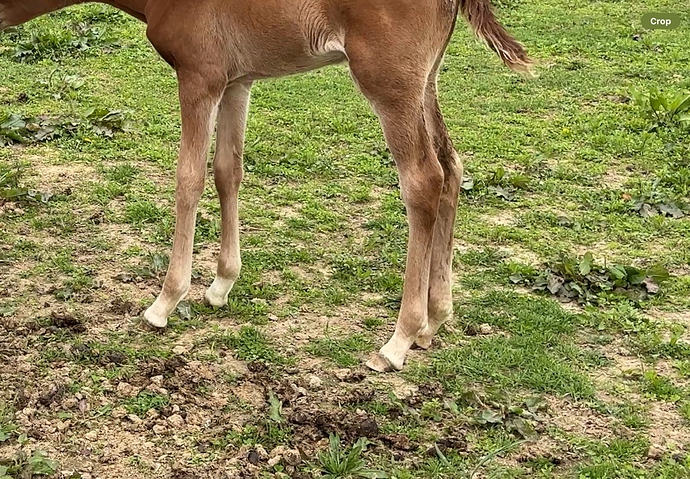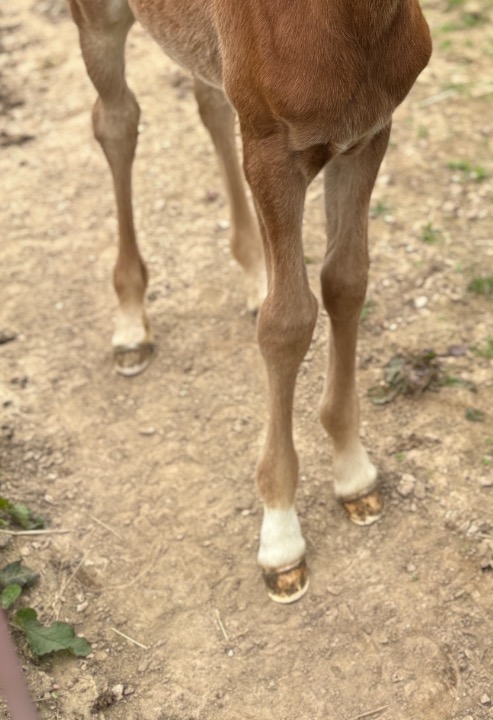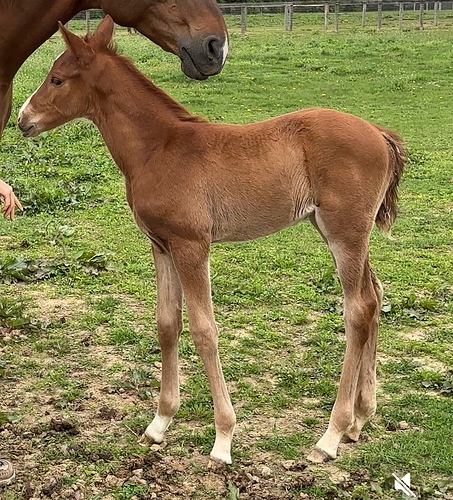I’m new to foals, and I have two questions for which I hope someone can provide some perspective/feedback.
Three week old foal with seemingly very low heels in the back feet, particularly the left hind. The breeding barn doesn’t seem concerned, and the vet is very hard to get a hold of unless it’s an emergency. Would you leave as-is for now and monitor? At what point would you engage some corrective measures? Otherwise no conformational faults - she was born very correct and moves well.
Secondly, for the color experts - I’d like to go ahead and register her, but I can’t quite tell what these leg markings will be! The right front is very clearly demarcated between the white sock and brown leg, but the other feet have a slow blend from white to brown. Will the other limbs darken, or do you think there will be more white?
And a bonus question - any guesses to what kind of chestnut she will eventually become? I know chestnuts can be very tricky (and I’m certainly no expert). Dam is a liver chestnut and sire is black.





